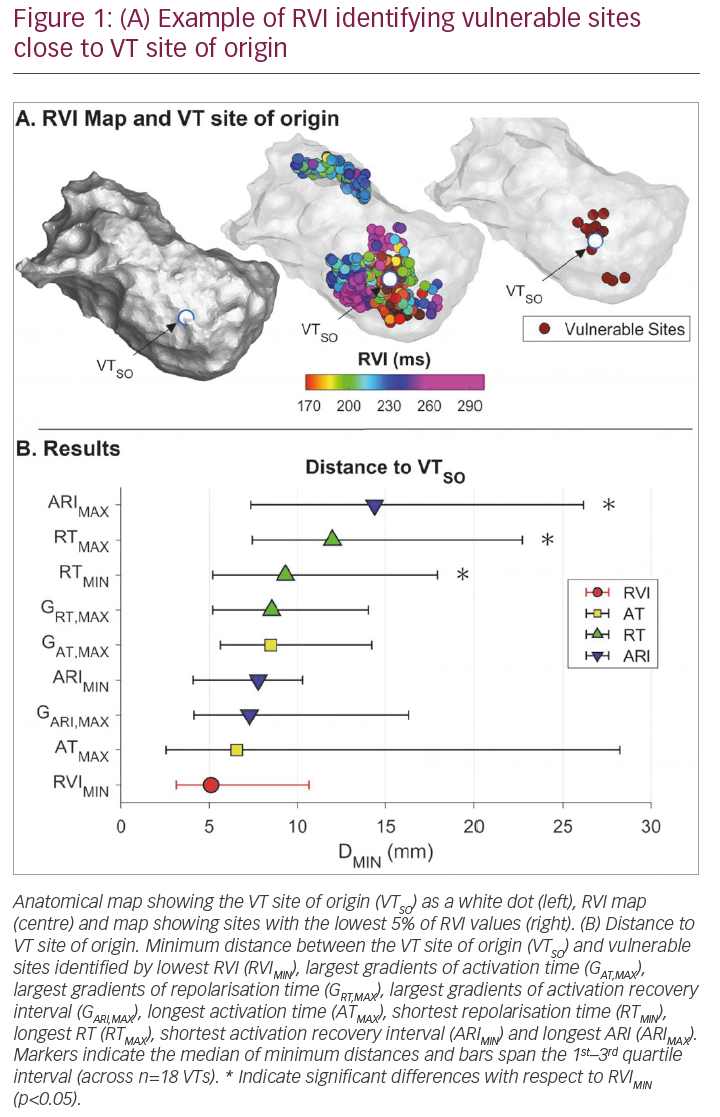Aim: Recurrence rate of ventricular tachycardia (VT) after catheter ablation remains sub-optimal. The re-entry vulnerability index (RVI) is a metric combining activation and repolarisation timings designed to identify sites critical for re-entrant arrhythmia initiation without inducing VT. This study uses high-density mapping to test its capability of identifying VT sites of origin (VTSO).
Methods: Eighteen VT ablation patients (16M, 72% with ischaemic disease) were studied. Unipolar electrograms were recorded during pacing at short coupling intervals using multipolar catheters (CARTO and Ensite Precision) and analysed off-line to produce activation time (AT), activation-recovery interval (ARI), repolarisation time (RT) and RVI maps (see Figure 1A). Potential target sites were compared for the following parameters: lowest 5% of RVI (see Figure 1A); highest 5% of local AT, ARI and RT gradients; highest and lowest 5% of AT, RT and ARI. The minimum distance between the VTSO and these sites, Dist, was measured. VTSO localization was considered accurate if Dist <10 mm and inaccurate if Dis t>20 mm.
Results: Eighteen VTSO were identified (6 entrainment, 12 pace mapping). RVI maps included 1,012 (408, 2098) (median, 1st–3rd quartiles) points/patient. Lowest RVI provided accurate VTSO localisation in 72.2% of VTs, with Dist=5.1 (3.2, 10.1) mm (see Figure 1B). Inaccurate localisation was significantly less frequent for lowest RVI than longest AT (5.6% versus 33.3%, OR=0.12, p=0.035). Compared to lowest RVI, longest RT and ARI showed significantly larger Dist (p<0.02), while highest AT and ARI gradients showed non-significantly larger Dist.
Conclusion: RVI identifies vulnerable regions closest to VTSO sites. Activation-repolarisation metrics may improve VT substrate delineation and inform novel ablation strategies.








